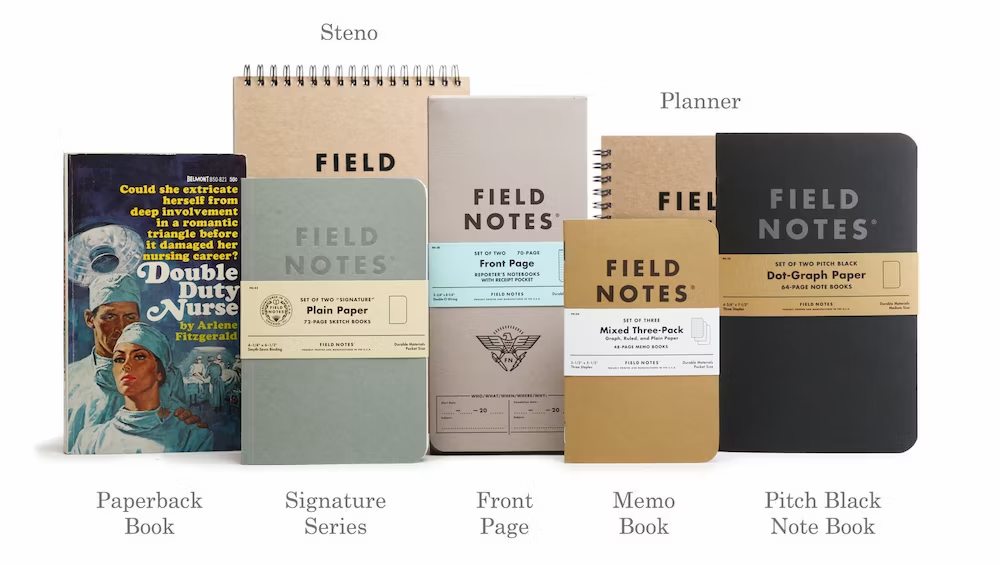D&D Journals from Field Notes
A review of the excellent Field Notes journals for Dungeons & Dragons players and dungeon masters.
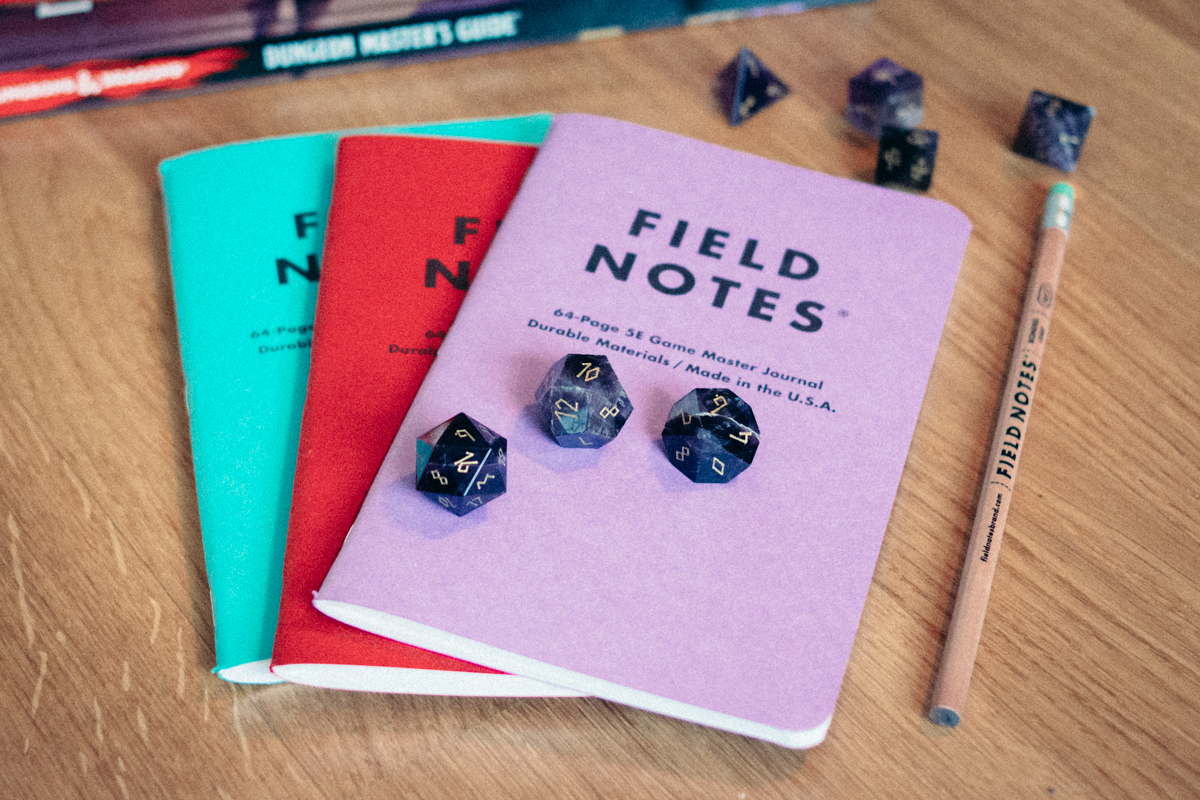
As regular readers of this blog know, I’ve recently started running a Dungeons & Dragons game for some friends. When you design your own game world and start to have people run around in it, you inevitably need to take notes. Lots of notes. I started doing so in a full-size Traveler’s Company notebook, but later noticed that Field Notes makes some amazing gaming journals, created especially for the 5th Edition of D&D. Sadly, it’s relatively hard to get Field Notes stuff here in Germany and I wasn’t able to buy any of these 5E gaming journals at all without importing them from other countries and paying a large markup in import fees or waiting weeks on a delivery.

The Adventure Set from Field Notes includes 4 Character Journals, 2 Game Master Journals, 2 Encounter Journals and 6 pencils.
To try and address this unsatisfactory situation here in Germany, I reached out to the nice people at the Umwerk  store in Munich and they were so nice as to import some of these journals for me. Which is pretty cool, because before this, I had only ordered from their store once, me living on the other side of the country and all. Because of this amazing display of customer service, you can now buy the Field Notes D&D journals in the Umwerk online store
store in Munich and they were so nice as to import some of these journals for me. Which is pretty cool, because before this, I had only ordered from their store once, me living on the other side of the country and all. Because of this amazing display of customer service, you can now buy the Field Notes D&D journals in the Umwerk online store  . I myself went and bought an Adventure Set, which now enables me to bring you the following review of these products.
. I myself went and bought an Adventure Set, which now enables me to bring you the following review of these products.
Journal Dimensions & Quality
Let’s first talk about the size of these journals. These are the larger version of Field Notes book, not the smaller memo size that is probably more widely known. The D&D journals are the same format as the Pitch Black notebook in this comparison image (which I grabbed off this product post):
The D&D journals (at 12 x 19 cm) are slightly shorter and a bit wider than my Traveler’s Notebook cover. But as is the case with the memo size from Field Notes and the Traveler’s Company passport size cover, you can still use them together. Even though they aren’t a 100% fit, it’s close enough that you probably won’t notice in day-to-day use. Especially if you have some special sleeves and other inserts mixed in with your notebooks.
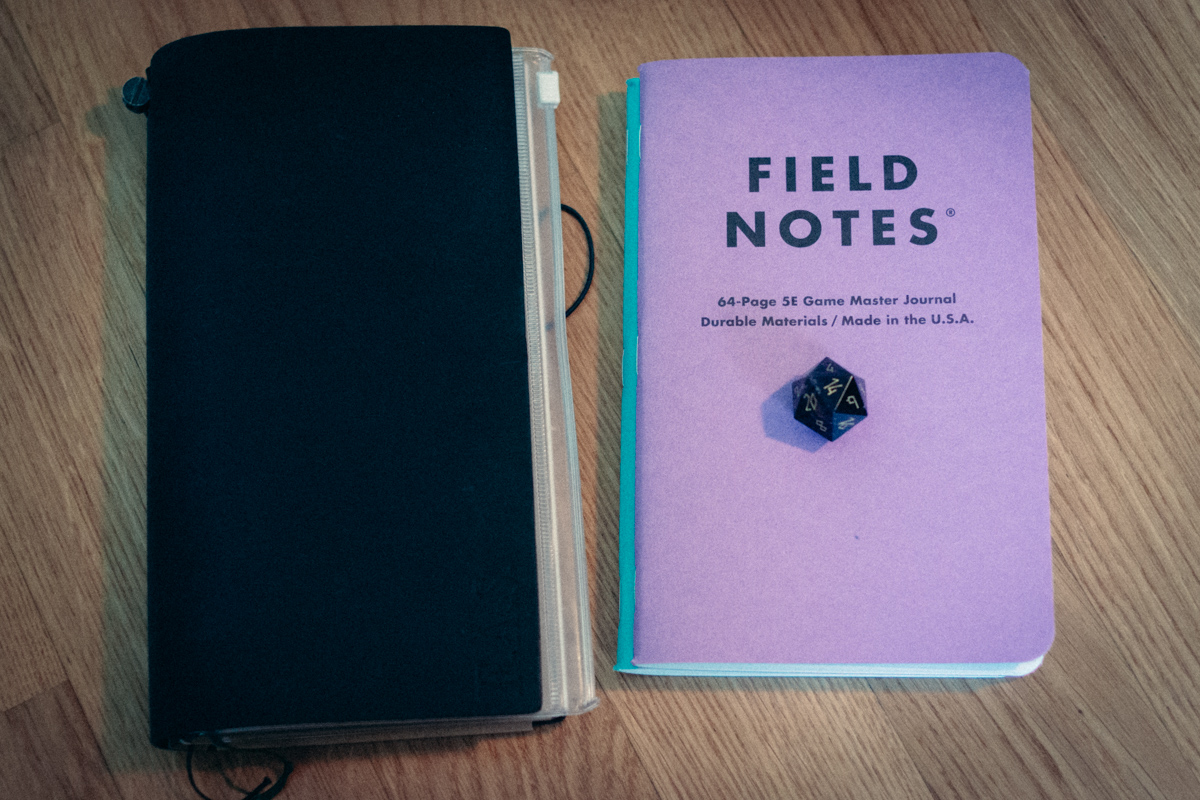
The journals measure 12 x 19 cm, which is slightly shorter and a bit wider than the Traveler's Company notebook I usually use for D&D note-taking.
You don’t have to use a cover, of course. These notebooks are perfectly usable as they are out of the box. Like other Field Notes books, these have a pretty sturdy kraft paper cover and a three staple binding that give them a somewhat pedestrian charm. Field Notes books are not as fancy as the posh MD paper inserts that come with the Traveler’s Company journals, but they also don’t cost as much. They have a distinct working man’s notebook charm and don’t be fooled: they do take quite a beating. I would say, though, that if you travel around a lot with these or are liable to spill drinks or take long walks in the rain – like me – then getting some sort of cover is definitely advised.
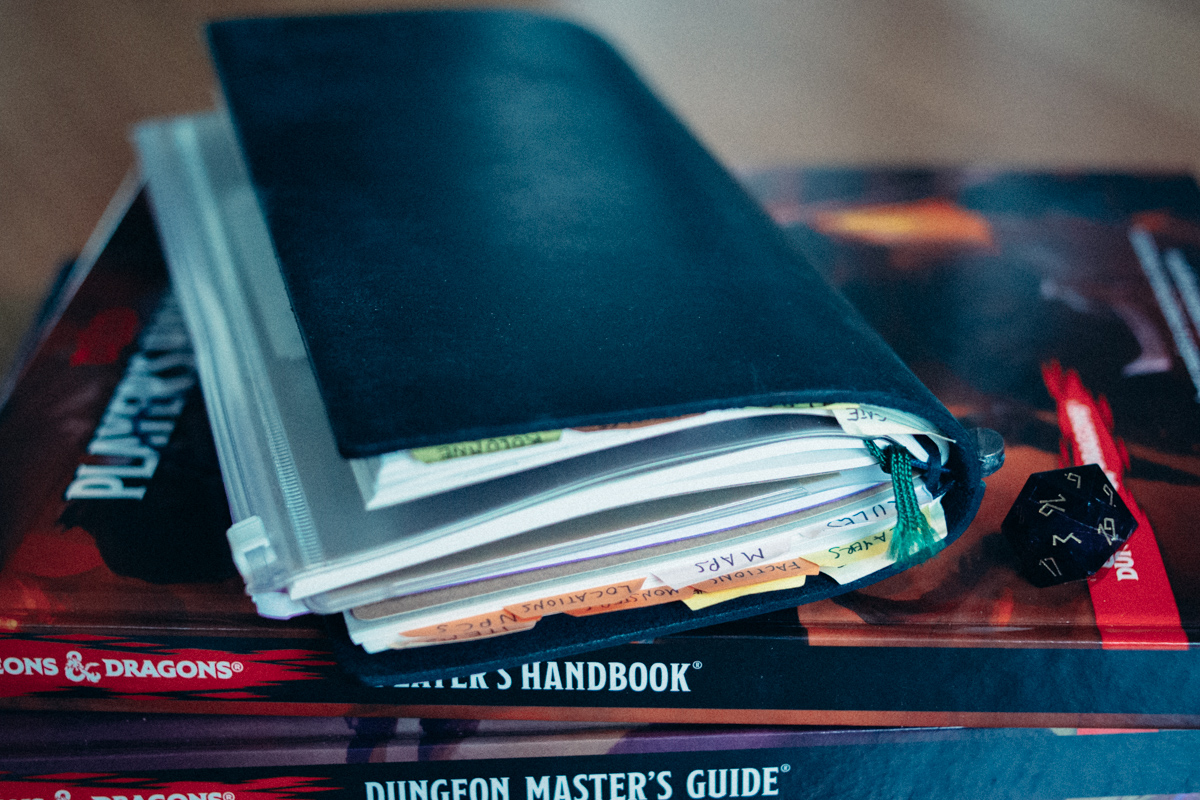
Despite not being quite the same size as the Traveler's Company inserts, the Field Note journals can still be used alongside them. They stick out a little bit laterally, but then so do some of the Traveler's Company special inserts.
The paper used in Field Notes books is top notch. It feels rougher and scratchier than MD paper, but it takes ink very well and is sturdy enough that you won’t easily perforate it with a well sharpened pencil. I don’t like fountain pens myself, but Field Notes books seem to stand up well when using them. I myself do all my writing with gel-based ink, specifically Pentel EnerGel inserts and I must say that this kind of ink dries very fast and doesn’t smudge in any Field Notes book I have ever tried, including the D&D books. If you let it dry for more than one second before closing the notebook, you’ll never have any stains or smudges in my experience.
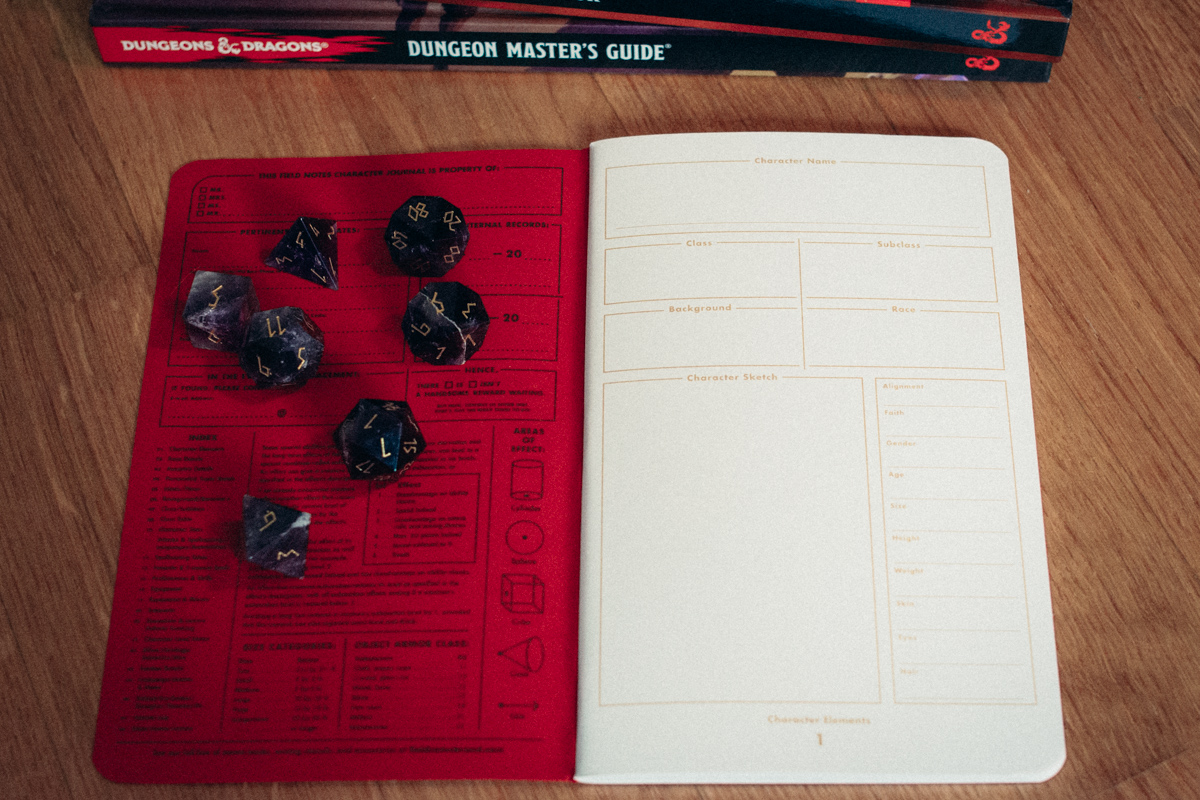
As is customary with Field Notes, the inside cover of the journal includes some useful, and also some silly, information.
The combination of their large size but lightweight footprint due to the light, flexible cover make these books ideal companions on the gaming table. I’m using them mostly on my desk at the moment while I am running a D&D campaign on the web via Roll20, but should I ever join an actual tabletop campaign as a player, I can see myself carrying one of the Character Journals along in my gaming bag, together with some dice, without a sweat. I also think that the paper quality would make me happy to take notes in these books during a hectic gaming session, even with a fountain pen, without having to worry about stains and smudges too much.
The Game Master Journal
I want to start my look at the actual insides of these books with the Game Master Journal, since I haven’t played D&D in decades and have more experience with the dungeon master side of things at the moment.
The inside cover has a handy index and – this is pretty cool – random tables for Dwarvish curses (D20), trash & treasure (D12), rare items (D10), villain motives (D8), bad things (d6) and – very cute! – halfling curses (D4). Of 64 pages in total, 11 pages are dedicated to general information about the campaign setting – its orientation in the general order of the multiverse, gods, the calendar, that sort of thing – followed by 4 hex grid pages for maps. There are 8 pages for detailed information on locations of different kinds, 10 pages for NPCs and 8 pages for player character information. 2 faction pages are followed by 2 pages for key monsters and several pages for items, artefacts and party downtime activities. The journal is rounded out by a page to keep track of possible milestones and XP awarded, 11 pages to keep notes on individual adventures for the party and two pages to create custom random tables.
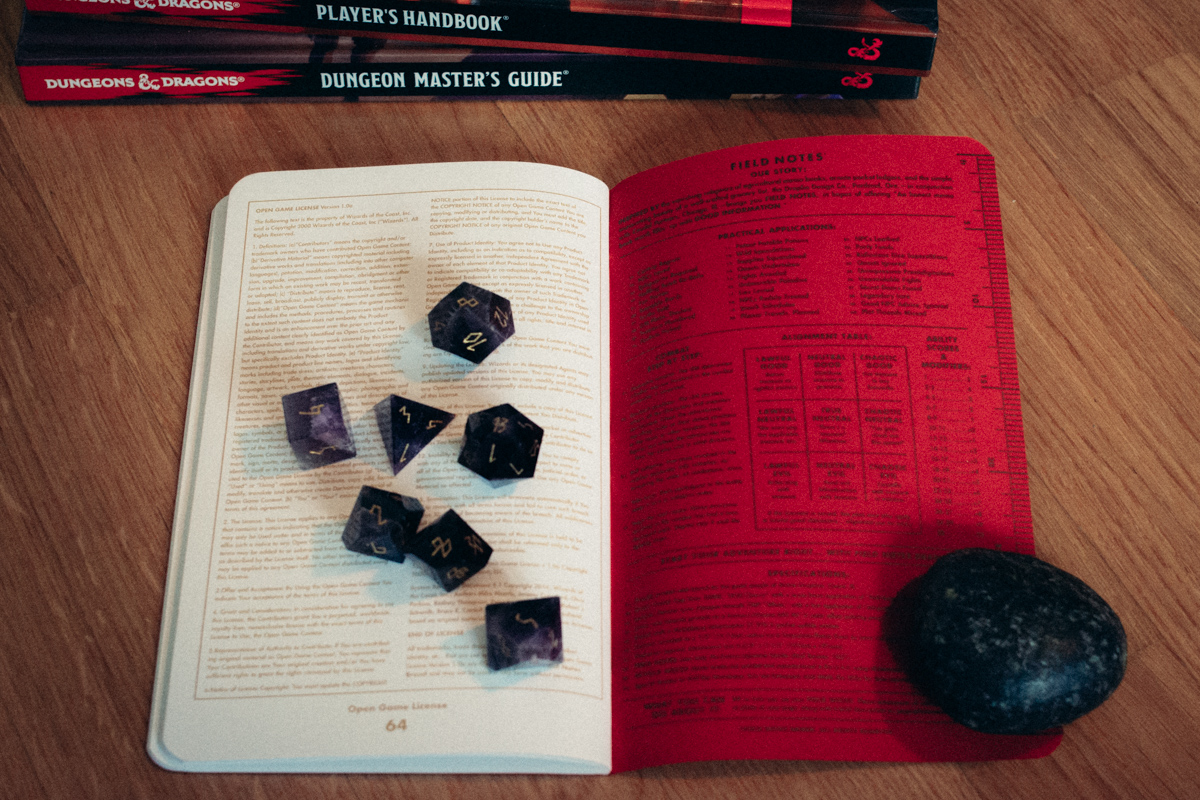
The back cover of all of the journals includes some very handy references.
Interestingly, the last page of all of the journals includes the text of the Open Game License, which, as a license geek, I found to be a nice touch. On the back cover of the Game Master Journal, there is additional reference material, like a nifty tavern name generator (D10), an alignment table and a step-by-step guide to combat in D&D. All the tables and lists in these journals are printed in English in a very subtle, yet easy-to-read light brown colour. Field Notes is famed for their beautifully understated typography and excellent layout and the D&D journals do not disappoint in this regard. These books are beautiful and very simple at the same time. They aren’t overburdened with the superfluous decoration many people seem to think goes well with fantasy role-playing games, and I am very happy with this.
These books take Field Notes’ working man’s notebook philosophy to tabletop role-playing games and succeed in delivering a serious, no-frills tool for the job that is right down my alley. World-building is serious business that benefits from a well thought-out notebook labelled with no-nonsense information set in Paul Renner’s masterpiece font.
The Monster / Encounter Journal
The Game Master Journal is designed to work in tandem with the second type of D&D book from Field Notes: The Monster / Encounter Journal. Where the former is designed to hold general information about the world the dungeon master is building, this second, 64-page book is aimed more towards the nitty-gritty of actually running game sessions for your players.
It starts with a page of general encounter building tips, followed by 15 double pages aimed at designing encounters – with sections for terrain sketches, story beats, enemies, special effects, rewards and general notes. The second section of the book starts with a page of monster building tips and an overview table for 15 monsters, followed by 15 double pages for in-depth information about these monsters. Such as a visual or textual sketch, accompanying lore, its attributes and abilities, features, actions and so on. This is a very nicely structured notebook that seems to be very focused on these two tasks.
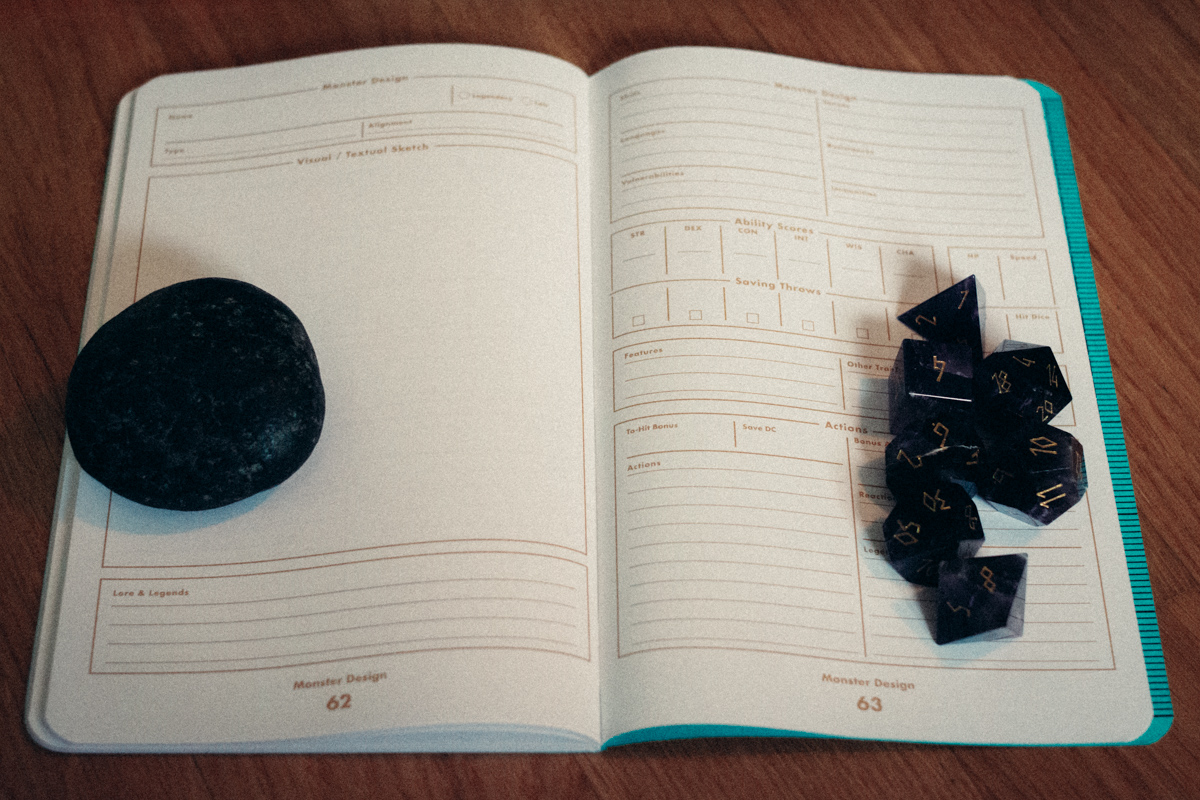
The Monster / Encounter Journal is made up of 15 double pages each to help you design challenging encounters and interesting monsters for your players to experience and fight.
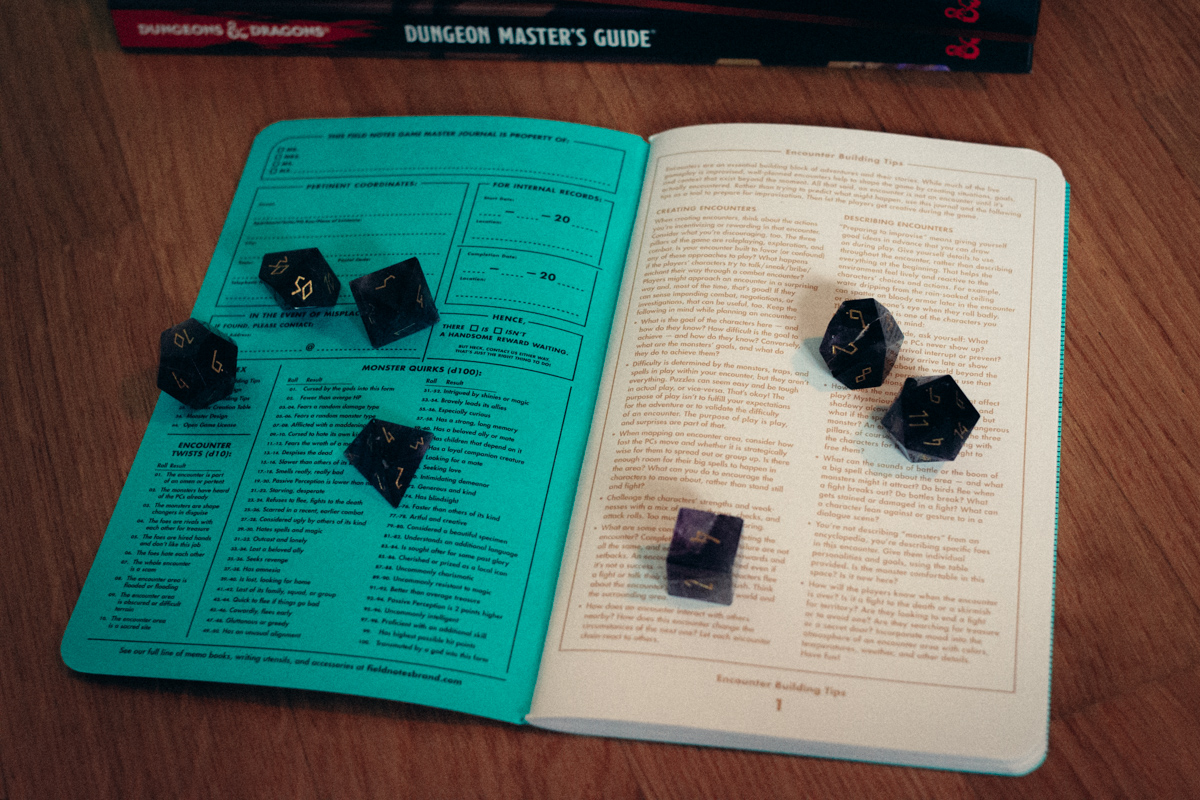
It also includes quick references that help dungeon masters with these tasks.
With both the Game Master and Monster / Encounter journals in hand, it seems to me that a dungeon master has everything they need at their disposal when it comes to planning and executing a D&D game session for their players. I will have to get some more experience using these notebooks, but they are actually structured very close to how I have organised my current Traveler’s Company notebook I used for DMing and accessing background information on my own D&D world. I was going off some guides I found on various blogs to structure blank inserts for my own journal and I ended up with something that is actually very similar to a combination of the Game Master and Encounter journals from Field Notes. That’s why I feel transitioning over to these will be very natural. And I’ll save a lot of work because all of the preparation of the actual notebook has already been done for me.
The Character Journal
The third and final type of Dungeons & Dragons journal from Field Notes is mostly interesting for players of the game, not so much their dungeon master. The 64-page Character Journal, as the name suggests, centres around taking notes on a specific player character. After a few starting pages with general information on their alter ego, players will find everything they need to keep track of their stats: Tables with class features, a two-page character sheet (information here will probably be filled out with a pencil to be erased and modified often), pages for spells, proficiencies and skills, pages for activities tracking, and a special page each – from level 1 all the way to level 20 – where players can keep track of their character’s developments and story beats. There’s also a number of pages where players can jot down the character’s faction affiliations, allies and sidekicks and copious space for campaign notes, short logs of gaming sessions as well as thoughts and theories on what their DM is planning.
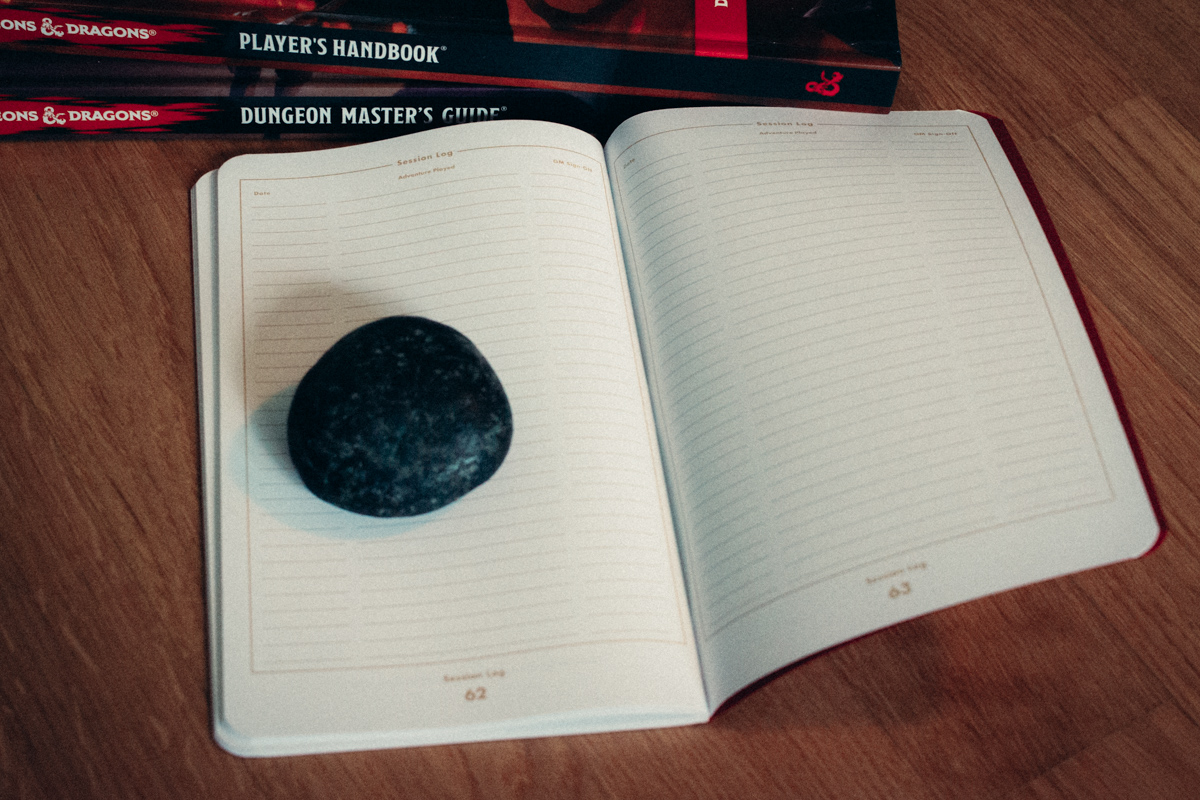
The last pages of the Character Journal leave some space for overall gaming session logs.
The Character Journal is as thought out as the dungeon master side of the D&D journal collection. Field Notes has done a wonderful job here. They’ve struck a nice balance between presenting you with useful information but also leaving you enough space for your own notes. Like the other two journals, the Character Journal feels sturdy and useful, in an understatedly elegant sort of way. These are by far the most polished journals specifically made for D&D players, that I’ve seen. And believe me, I’ve looked at at lot of offerings over the last few months.
Specifically the fact that these notebooks don’t have a corny fantasy look appeals to me very much. I am a geek, but I’m a stylish geek at that. If you want a more fantasy look, you can stick these in a nice, thick leather cover and they’ll at least look more fantasy on the outside. You will probably come to enjoy using the immaculate typography and layout on the inside. You might even get addicted to it…
I would recommend a cover anyway. These are perfectly fine as they are, but a good cover makes any notebook more durable and, frankly, more fun to lug around and actually use. These notebooks are 12 x 19 cm (with a thickness of about 8 mm), so they should fit any A5 notebook cover you come across. I any case, I am beyond happy that these notebooks exist in my life now.


